A trip to the Vatican Museum
The security screening at the entrance hall of the Vatican Museum is such that you should be forgiven for thinking that you at a domestic US airport. Bags are not allowed inside the museum. Fortunately, cameras are.
The tour of the museum begins with a walk through a long corridor lined with tens of old, yellowing busts of various vintages. When you are looking at busts that are thousands of years old, a cracked neck, a broken ear, or a chipped nose does not come in the way of your appreciation.
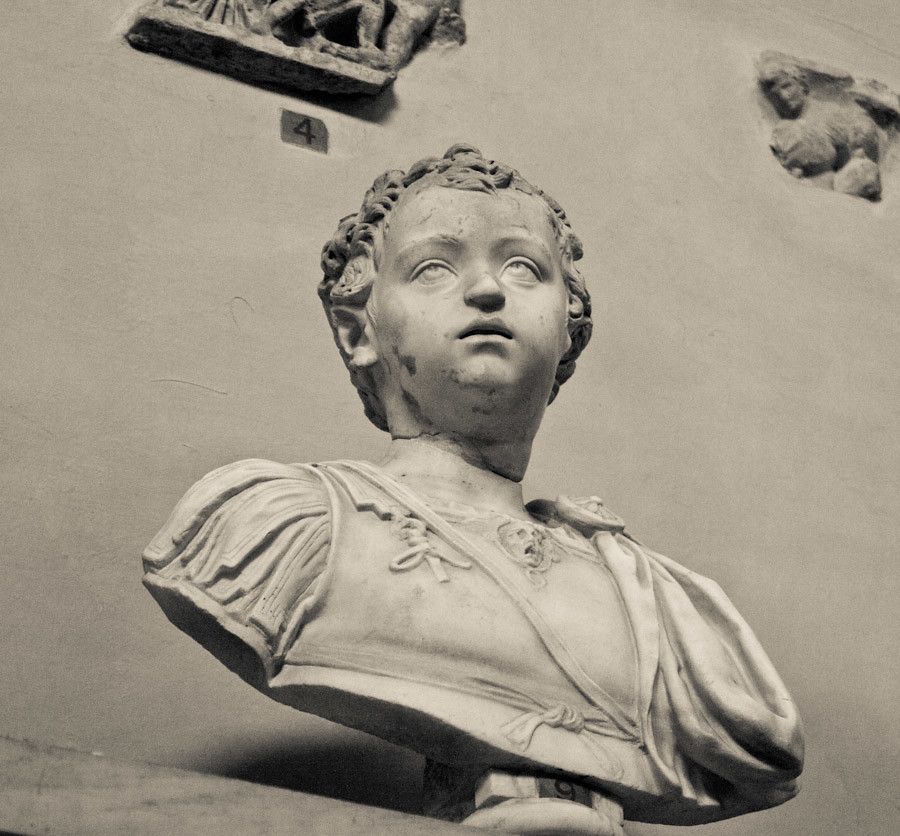 Boy warrior?
Boy warrior?
I was a tad shaken on seeing this one bust:
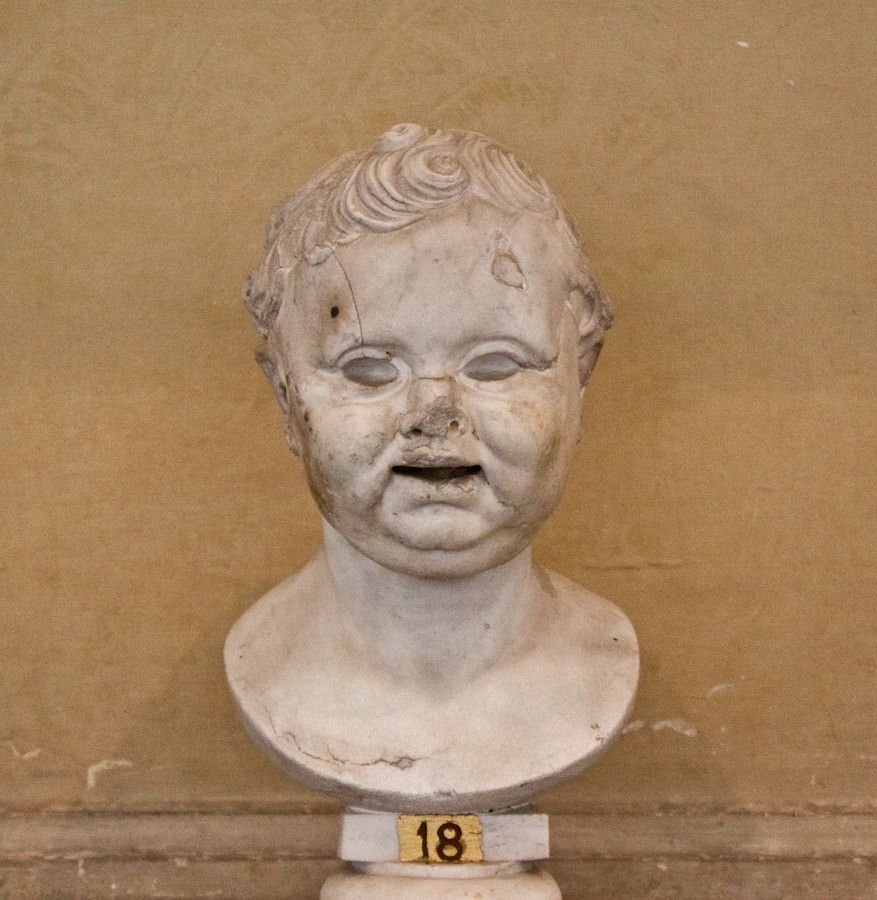 The bust that reminded me of…
The bust that reminded me of…
It brought to mind the iconic shot of the Bhopal gas tragedy (I was just 6 then — too young and too far away to make sense of the event).
An adjoining hall with another sets of busts and statues looks a little less dolorous - largely due to the generous quantity of sun streaming in through the beautiful, domed roof.
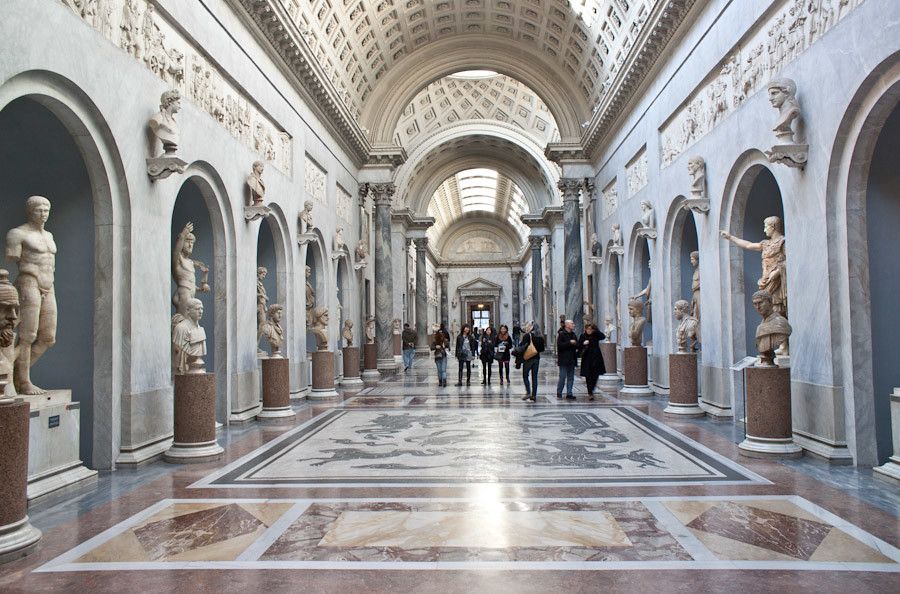 A sunny corridor of the Vatican Museum
A sunny corridor of the Vatican Museum
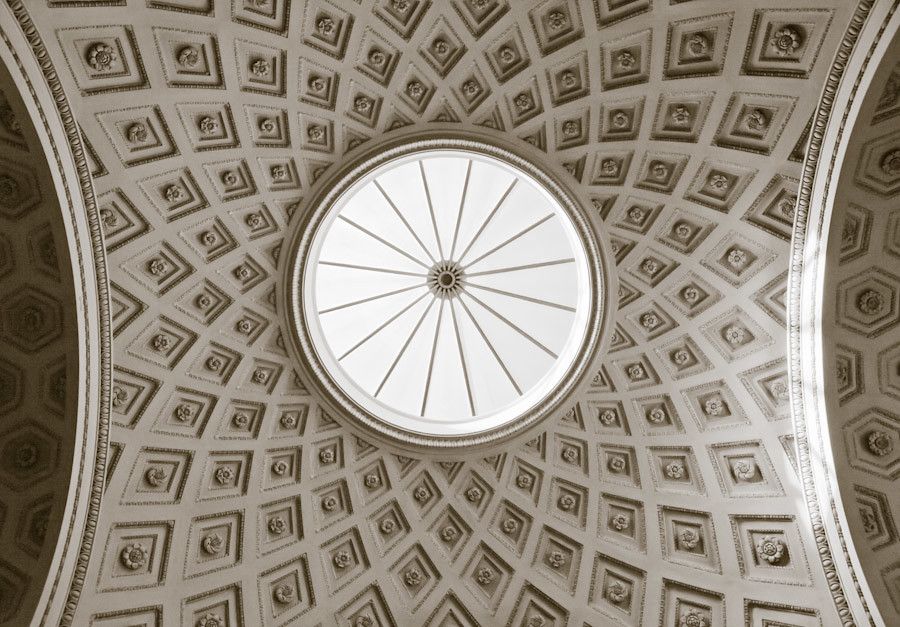 Beautiful roof with sun streaming in
Beautiful roof with sun streaming in
This statue reminded me of Mark Zuckerberg:
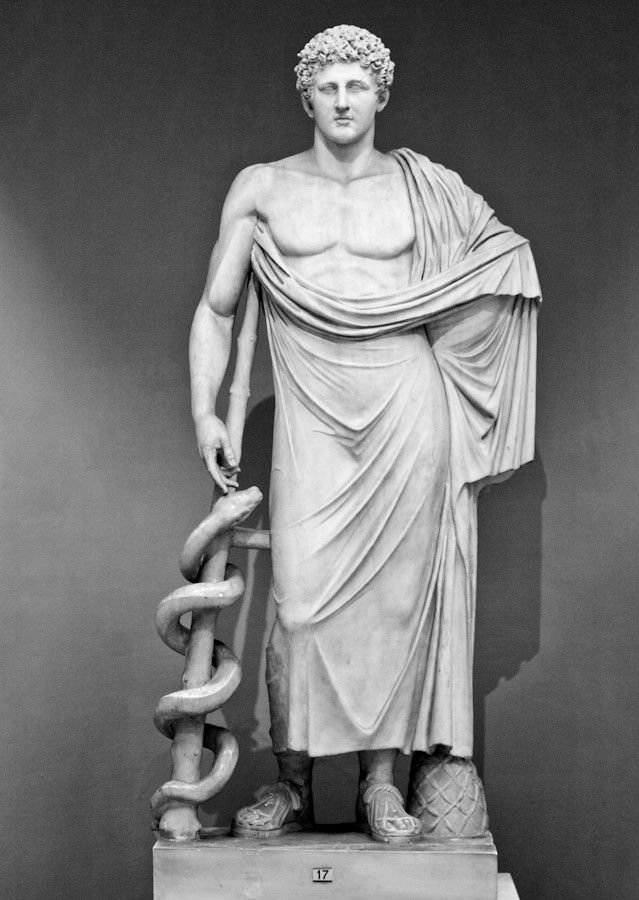 Mark Zuckerberg?
Mark Zuckerberg?
(Update: It’s actually Asclepius the Greek God of medicine and healing)
And had this been Nero, it would have wholly resonated with my sense of irony:
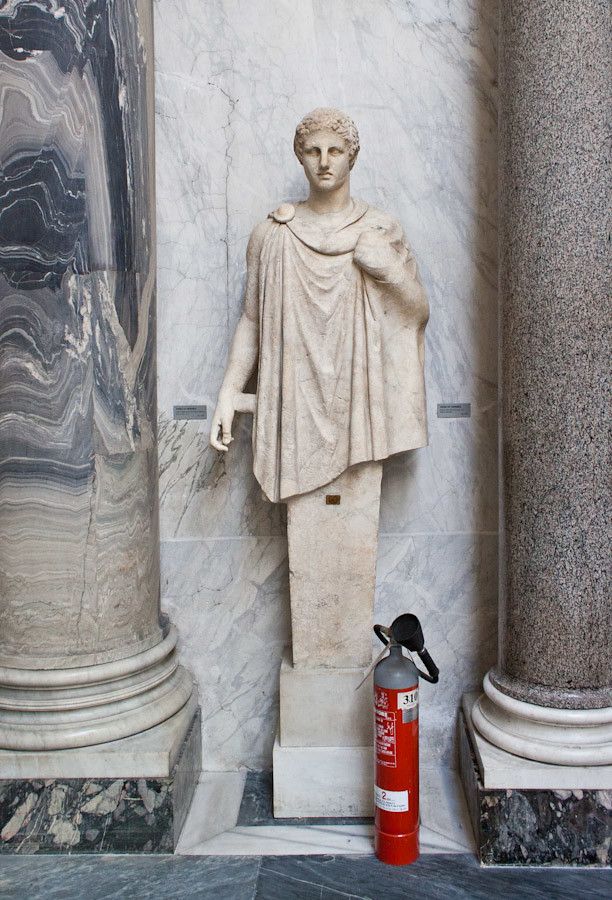 Not Nero
Not Nero
Alas, this was just Herm of Hermes.
This section with busts and statues was just a tiny portion of the museum and was followed by corridors with beautiful painted ceilings and floor patterns that looked almost contemporary:
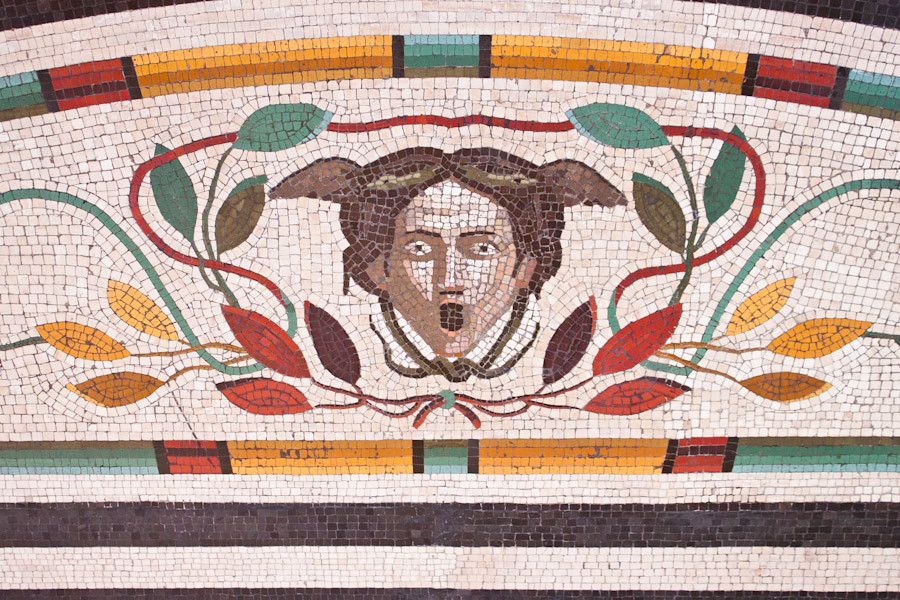 Hunderds of year old designs can sometimes look contemporary
Hunderds of year old designs can sometimes look contemporary
Even while taking pictures, it was very clear to me that the paintings overhead were a lot more detailed than my eyes were capable of seeing from a few feet below. But this realisation didn’t fully sink in till I zoomed into the pictures.
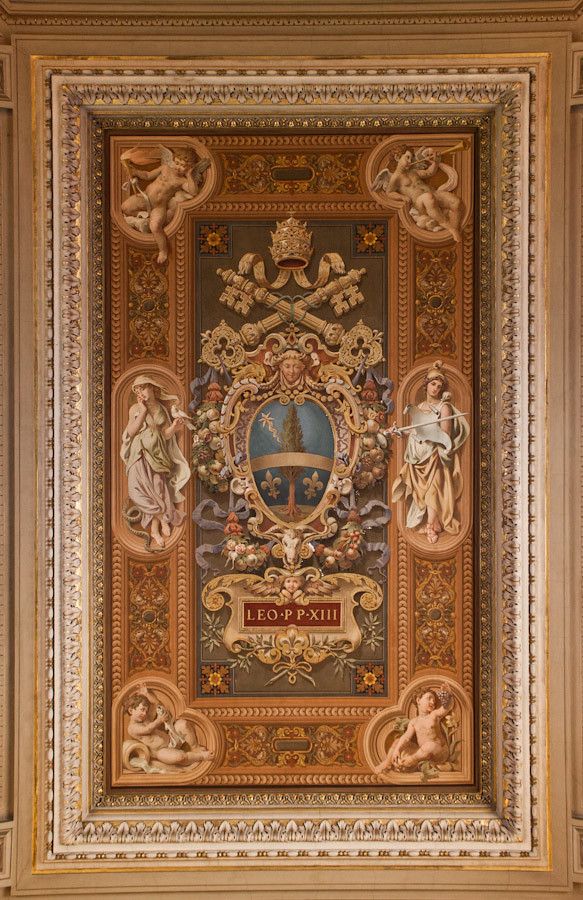 A painting on the ceiling
A painting on the ceiling
And here is a small section from the bottom left corner of the above picture:
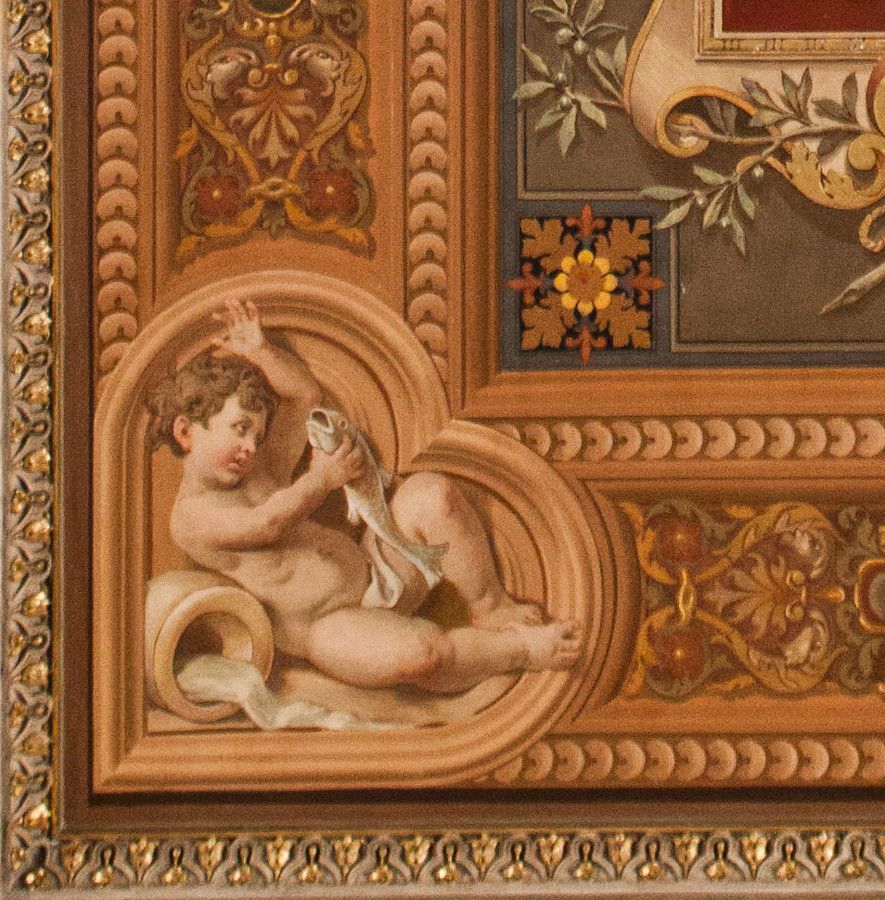 Detail from a painting on the ceiling
Detail from a painting on the ceiling
The richness extended well into the third dimension. As we walked along with the other visitors, we found ourselves in a long corridor with monochromatic relief-work all along the ceiling.
 Monochromatic relief work on the ceiling
Monochromatic relief work on the ceiling
In some corridors they were juxtaposed with colourful tapestries on the wall.
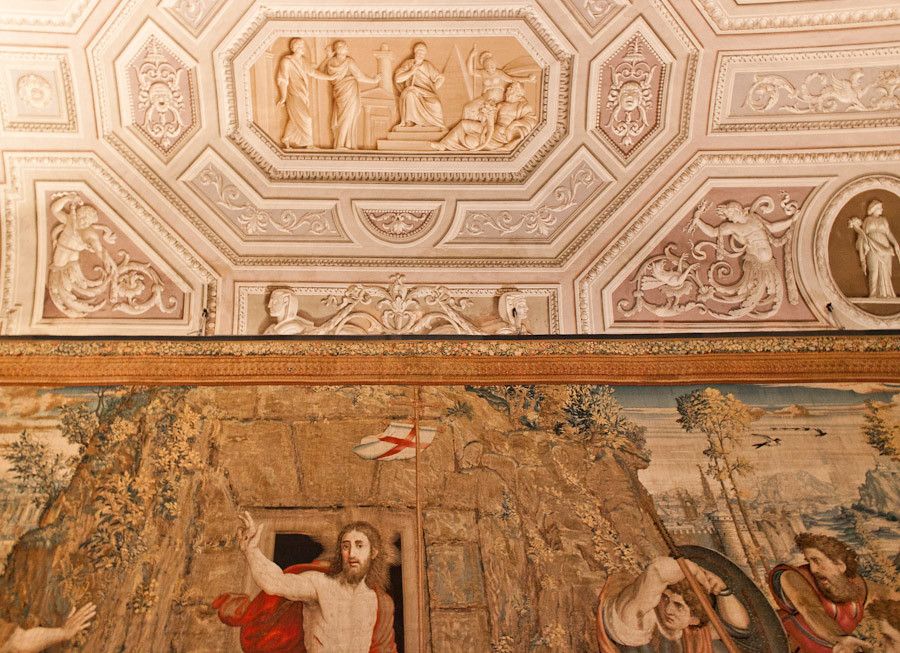 Colourful tapestries on the walls juxtaposed with monochromatic relief work on the ceiling
Colourful tapestries on the walls juxtaposed with monochromatic relief work on the ceiling
Photography becomes a bit of an intense physical sport when you are trying to take pictures of ceilings in low light. Just as one corridor would end, a door would lead us into another one — grander and more colourful than the one we were leaving.
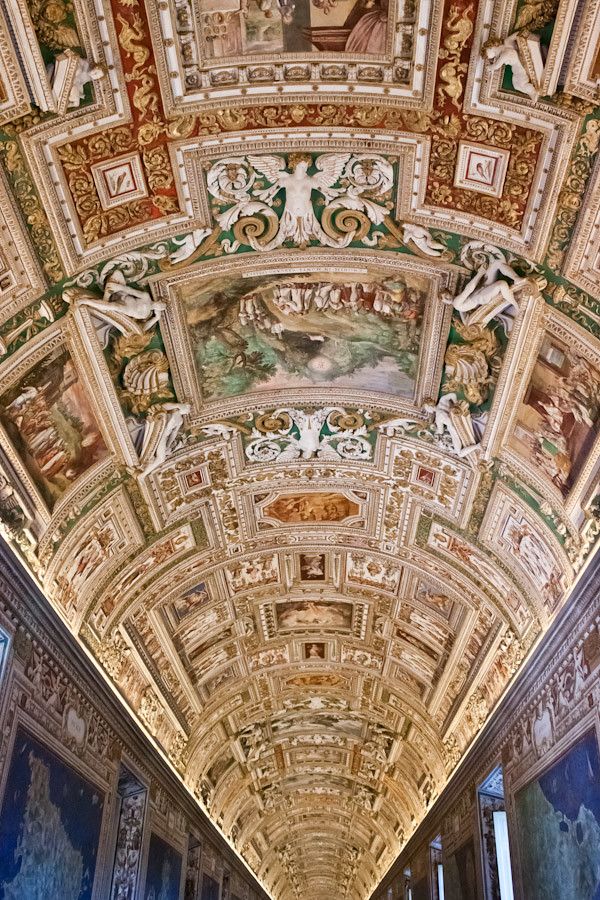 Painted ceilings that extended for hunderds of meters
Painted ceilings that extended for hunderds of meters
It’s a heady feeling to see the artistic output of several centuries condensed into a few minutes. I found the leap from antiquity to Renaissance most thrilling.
When you follow the flow of the crowd that the museum has decided; so that the visit might conclude in Sistine Chapel, most paintings on the ceiling appear upside down. I had to stand against the traffic to click the pictures.
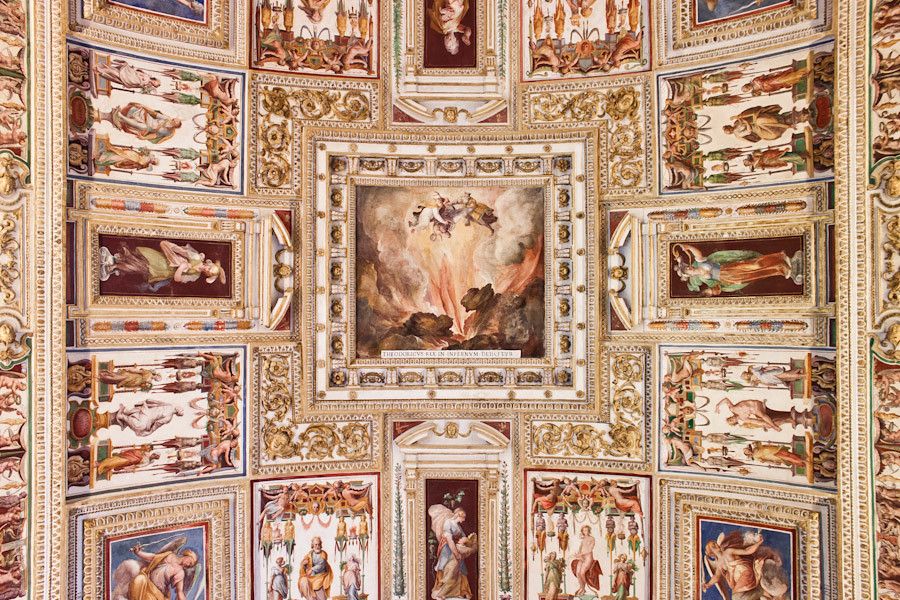 Yet another very detailed section of one of the ceilings
Yet another very detailed section of one of the ceilings
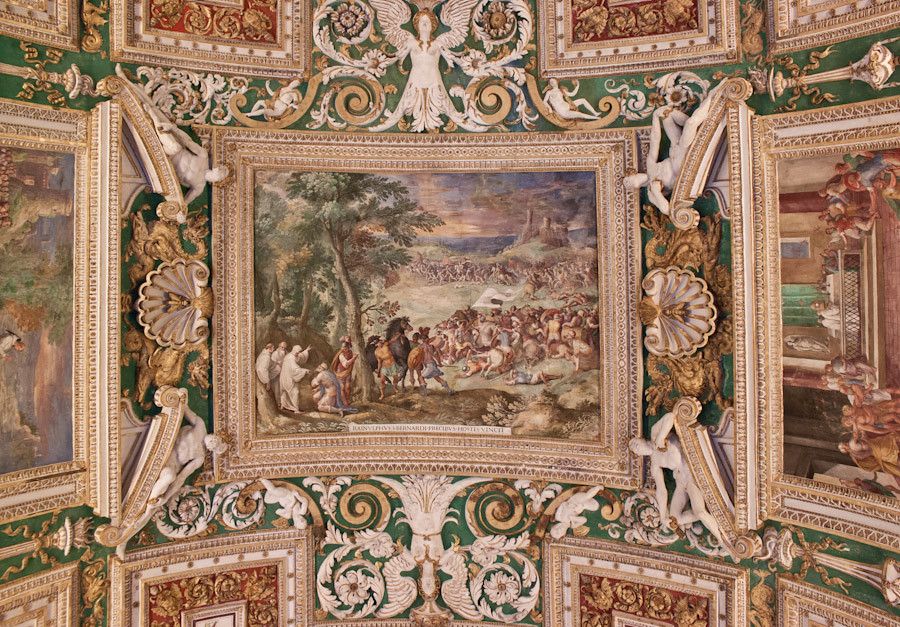 Yet another very detailed section of one of the ceilings
Yet another very detailed section of one of the ceilings
The long chain of corridors eventually ended in a series of large, airy rooms whose walls and ceilings were covered in elaborate paintings depicting scenes from coronation ceremonies and battles. They seemed to radiate light.
 Battle scenes painted on the walls
Battle scenes painted on the walls
Then there were paintings on the ceiling, whose perspectives were deliberately chosen by the artists to make your head spin.
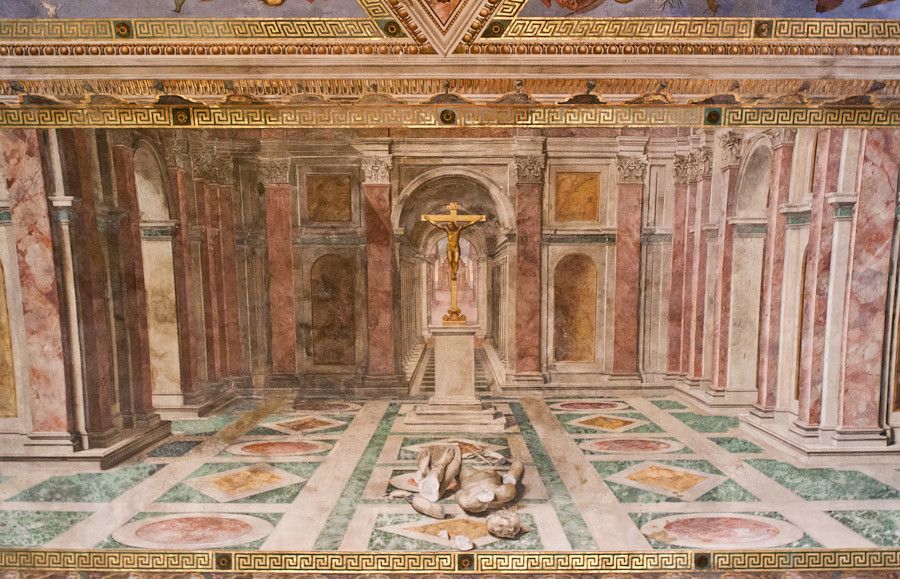 This was painted on a ceiling
This was painted on a ceiling
Some of these paintings are so skilfully done and blend so well into the physical space that you sometimes cannot tell where the painting ends and the real world begins:
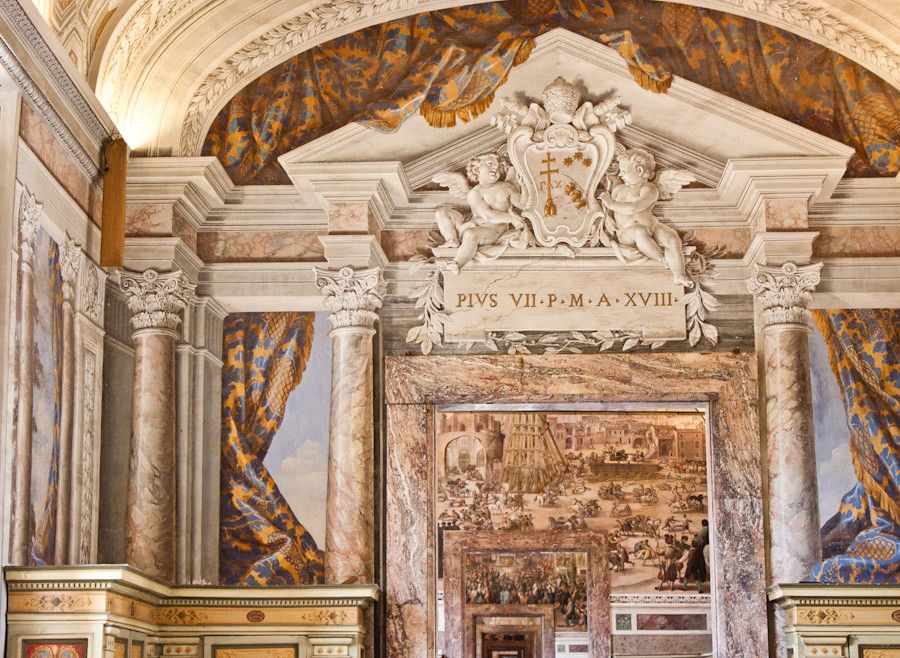 Mixing 2D and 3D till you cann’t tell which is which
Mixing 2D and 3D till you cann’t tell which is which
Some modern works of art were also on display. Their minimalism is a bit jarring. It was as if we had gone back to the primitiveness of a cave painting.
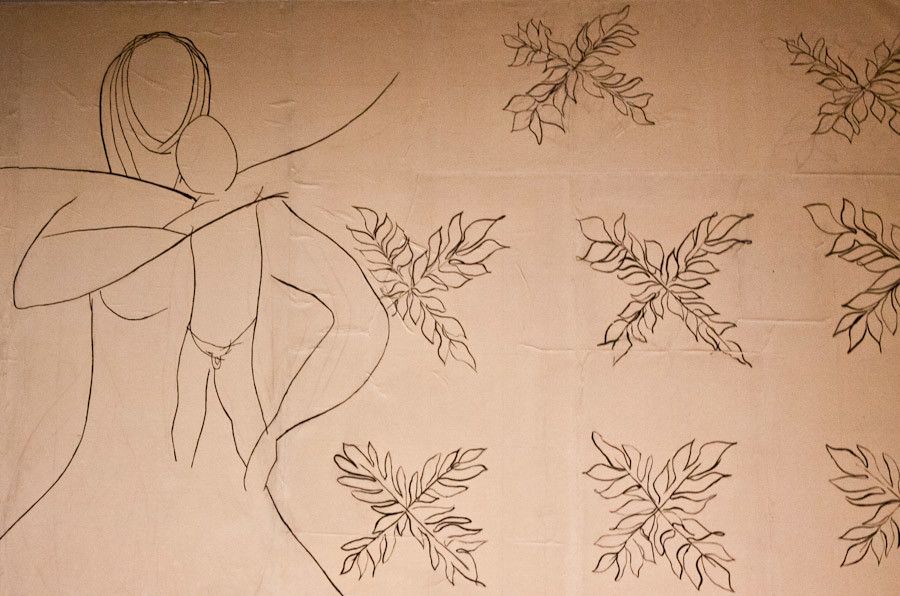 The things that pass for art these days
The things that pass for art these days
Or may be the works were carefully chosen to accentuate the effect of what awaits all visitors and the end of their tiring walk…
As I eventually walked into Sistine Chapel, I was so dazed and dazzled that I didn’t notice the signs prohibiting photography. That the signs were on the walls and I was looking at the ceilings all along must’ve had something to do with it too. I removed the lens cap, pointed the camera to the ceiling, composed that perfect shot but before I could press the shutter-release, a burly, balding guard was standing next to me yelling - NO PHOTOGRAPHY PLEASE… SIR. It was an awkward comical moment — all eyes were on me, and the guard who looked determined to prevent me from taking a picture even if it meant physical intervention. I meekly apologised, smiled sheepishly and left the place as soon as I could without it looking a deliberate, hasty retreat.
It was like being at a party where you are treated to a multi-course meal of choicest, exotic delicacies but when it’s time for dessert, the hosts tell you leave.
The wife consoled me with the virtual tour of the Sistine Chapel. I don’t think anyone could have done a better job of photographing it.
The visit ends in the Vatican post office. As I walked down the spiral staircase, I was happy at having seen so much but sad in the knowledge that the two plus odd hours that we had spent here hadn’t been enough.
 The stairwell at the Vatican Museum
The stairwell at the Vatican Museum